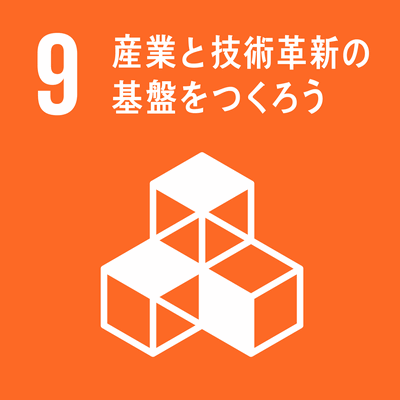シラバス表示
シラバスの詳細な内容を表示します。
→ 閉じる(シラバスの一覧にもどる)
科目の基本情報
| 開講年度 | 2024 年度 | |
|---|---|---|
| 開講区分 | 工学研究科(博士前期課程)分子素材工学専攻/応用化学専攻 | |
| 領域 | 主領域 : E; 副領域 : F | |
| 受講対象学生 |
大学院(修士課程・博士前期課程・専門職学位課程) : 1年次, 2年次 |
|
| 選択・必修 | 講座必修 |
|
| 授業科目名 | 材料物理化学特論 | |
| ざいりょうぶつりかがくとくろん | ||
| Advanced Materials Physical Chemistry | ||
| 単位数 | 2 単位 | |
| ナンバリングコード | EN-PHCH-5
|
|
| 開放科目 | 非開放科目 | |
| 開講学期 |
後期 |
|
| 開講時間 |
水曜日 9, 10時限 |
|
| 授業形態 |
対面授業 * 状況により変更される可能性があるので定期的に確認して下さい
「オンライン授業」・・・オンライン会議ツール等を利用して実施する同時双方向型の授業 |
|
| 開講場所 | 研究室および総合研究棟I2階セミナー室 (開講場所が教室の場合は、決まり次第Moodle、メール等で連絡します。) |
|
| 担当教員 | 小塩 明(工学研究科応用化学専攻) | |
| KOSHIO, Akira | ||
| SDGsの目標 |
|
|
| 連絡事項 | * 状況により変更される可能性があるので定期的に確認して下さい |
|
学修の目的と方法
| 授業の概要 | ナノカーボン(フラーレン、カーボンナノチューブ、グラフェンなど)をはじめとして、さまざまなナノ物質(ナノ粒子、ナノワイヤー、ナノシートなど)の作製方法ならびに分析・評価方法、それらの物性などの基本的事項を紹介する。さらに、材料応用などの最近の進展を論文をもとに講義する。 (Course description/outline) Introducing basic items such as formation methods, analysis / evaluation methods, and their physical properties of various nanomaterials (nanoparticles, nanowires, nanosheets, etc.) including nanocarbons (fullerene, carbon nanotubes, graphene, etc.). In addition, lectures will be given on recent developments such as material applications based on papers. |
|---|---|
| 学修の目的 | ナノ物質の様々な作製方法や分析・評価方法に関する知識を習得する。また、ナノ物質の分析・評価あるいは、デバイスやセンサーなど様々な材料への応⽤を検討する際に有⽤となる、基礎物性と最新の研究例・実⽤例を知識として習得する。 (Learning objectives) The goals of this course are to obtain knowledge about various formation methods and analysis / evaluation methods of nanomaterials, and to learn basic physical properties and the latest research examples and practical examples that are useful when analyzing/evaluating nanomaterials or examining applications to various materials such as devices and sensors. |
| 学修の到達目標 | 様々な材料の作製方法や分析・評価方法に関する“使える”知識を習得し、修士研究さらには将来、研究開発や製造現場、製品管理など実際の材料を取り扱う何らかの場面に遭遇したときに、授業で得られた知識とリンクさせ適切に対応できるようになる。 (Achievements) In this course, you will acquire "usable" knowledge about various material formation methods and analysis / evaluation methods, and when you encounter some kind of situation where you handle actual materials such as research and development, manufacturing sites, and product management in the future, as well as master's research. You will be able to respond appropriately by linking with the acquired knowledge. |
| ディプロマ・ポリシー |
|
| 成績評価方法と基準 | レポート50%、出席50% (Grading policies and criteria) Reports 50% and class attendance 50% |
| 授業の方法 | 講義 |
| 授業の特徴 |
教員と学生のやり取りは日本語でも、英語による論文や教材の講読を含んだ授業 |
| 授業アンケート結果を受けての改善点 | ナノ材料化学に関する最新の技術、話題を盛り込み、学生の理解度を勘案しながら授業を進める。また、自分の研究に役立つ情報のつかみ方など将来役に立つ考え方を含めて講義する。 (Ideas for improving classes) This lecture will incorporate the latest technologies and topics related to nanomaterial chemistry while taking into consideration the level of understanding of students. In addition, lectures will be given including ideas that will be useful in the future, such as how to catch information that is useful for one's research. |
| 教科書 | |
| 参考書 | 授業中に紹介する。 (Reference materials) Introduce during this class. |
| オフィスアワー | 随時、総合研究棟Ⅰ205室(事前にメールで確認すること。) (Office hour) Open at any time, Room 205 in the General Research Building I Please make an appointment by e-mail in advance. |
| 受講要件 | 特になし (Prerequisites) N/A |
| 予め履修が望ましい科目 | 特になし (Courses encourage to take in advance) N/A |
| 発展科目 | 量子化学特論 (Advanced courses) Quantum Chemistry |
| その他 |
英語対応授業である。 (This course is English-supported.) |
授業計画
| MoodleのコースURL |
https://moodle.mie-u.ac.jp/moodle35/course/view.php?id=18771 |
|---|
| キーワード | 材料化学、ナノカーボン、ナノ物質(ナノチューブ、ナノファイバー、ナノ粒子、ナノワイヤー)、デバイス、センサー |
|---|---|
| Key Word(s) | Materials Chemistry, Nanocarbons, Nanomaterials, Nanotubes, Nanofibers, Nanoparticles, Nanowires, Devices, Sensors |
| 学修内容 | 第1回:「様々なナノ物質」 第2回:「ナノ物質の作製法」(その1)(プラズマ) 第3回:「ナノ物質の作製法」(その2)(化学気相成長法とその他の方法) 第4回:「真空技術」(その1)(真空の性質、真空のつくりかた) 第5回:「真空技術」(その2)(真空を測る、真空部品) 第6回:「分析・評価方法」(その1)(電子顕微鏡(SEM、TEMなど)) 第7回:「分析・評価方法」(その2)(表面分析(XPS、STMなど)と元素分析(EDX、EELSなど)) 第8回:「分析・評価方法」(その3)(分光(Raman、IRなど)と質量分析(TOFMSなど)) 第9回:「ナノカーボン」(その1)(フラーレン) 第10回:「ナノカーボン」(その2)(カーボンナノチューブ) 第11回:「ナノカーボン」(その3)(グラフェン) 第12回:「ナノカーボン」(その4)(カーボンナノホーンと多面体グラファイト) 第13回:「ナノカーボン」(その5)(様々なナノカーボン物質) 第14回:「ナノ粒子とナノワイヤー」 第15回:「その他のナノ構造」 (Course contents) 1st "Various nanomaterials" 2nd "Formation methods of nanomaterials" (Part 1) (Plasma) 3rd "Formation methods of nanomaterials" (Part 2) (Chemical vapor deposition and Other methods) 4th "Vacuum technology" (Part 1) (Vacuum properties, How to make a vacuum) 5th "Vacuum technology" (Part 2) (Vacuum measuring, Vacuum Parts) 6th "Analysis / evaluation method" (Part 1) (Electron microscope (SEM, TEM, etc.)) 7th "Analysis / evaluation method" (Part 2) (Surface analysis (XPS, STM, etc.) and Elemental analysis (EDX, EELS, etc.)) 8th "Analysis / evaluation method" (Part 3) (Spectroscopic (Raman, IR, etc.) and Mass spectrometry (TOFMS, etc.)) 9th "Nanocarbons" (Part 1) (Fullerenes) 10th "Nanocarbons" (Part 2) (Carbon nanotubes) 11th "Nanocarbons" (Part 3) (Graphene) 12th "Nanocarbons" (Part 4) (Carbon nanohorns and Polyhedral graphite) 13th "Nanocarbons" (Pat 5) (Various nanocarbon materials) 14th "Nanoparticles and nanowires" 15th "Other nanostructures" |
| 事前・事後学修の内容 | 講義内容を確実に理解するために、不明な点は授業後に質問あるいは自ら調べてみること。さらに自分の大学院での研究に役に立つことはないか、新しい着想などないか考えてみること。 (Contents for pre and post studies) To ensure that you understand the content of the lecture, ask questions or investigate yourself after class if you have any questions. In addition, think about whether it will be useful for your graduate school research or if you have any new ideas. |
| 事前学修の時間:60分/回 事後学修の時間:120分/回 |
